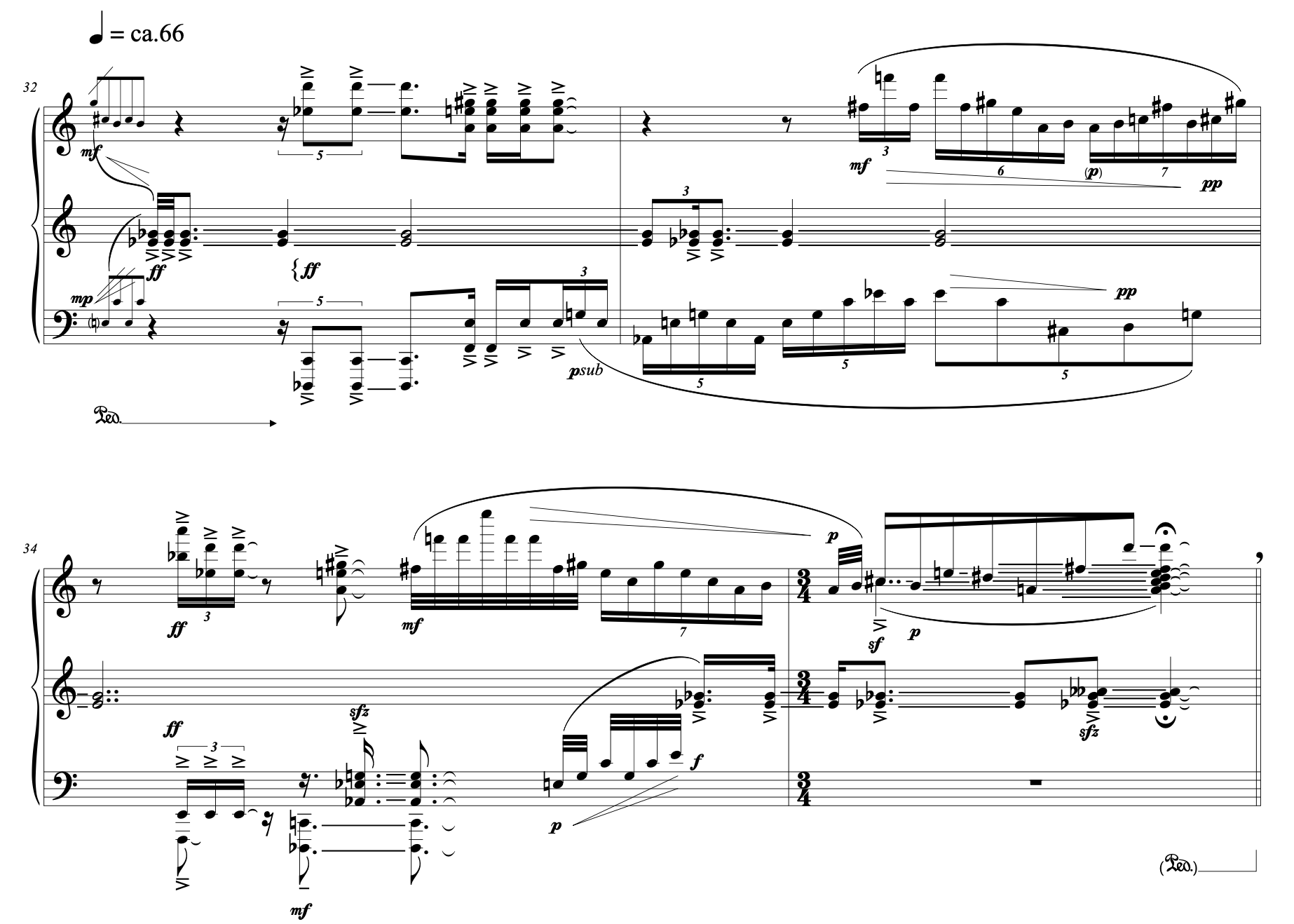
피아노 독주를 위한, "하베이의 무덤"
a playing/listening experience that feels like peeling back the layers of the piano to find new resonances,
release some ancient voice that's always been part of it but new to our ears.”
Arie Mo, pianist, on Le Tombeau de Harvey
"Callithumpian Consort: Karchin, Murail, Chacon, Rădulescu, Lee, and Montgomery"
Ariel Mo, piano
Jordan Hall, New England Conservatory, Boston, US, January 18, 2022
Nov 2018, Balázs KÁLVIN, Bartók World Competition Finalist Gala Concert
Grand Hall, Liszt Academy, Budapest, Hungary
Awards:
Third Prize, The First Bartók World Competition - Composition, Budapest, Hungary, 2018
Adjudicated by the jury: Thomas Adès (chair), Unsuk Chin, Chaya Czernowin, and Gyula Fekete
Duration: ca. 15 minutes (revised version, 2019)
Score video featured on Youtube
Ariel Mo, piano, Jordan Hall, New England Conservatory, Boston, US, January 18, 2022
Program notes
This work is strongly based on bell acoustics. The bell’s luminous and sometimes even spiritual sonic physiognomies include not only inharmonic spectral components that come from its primeval shape of a simple circular plate (R. Perrin and T.D. Rossing, 1984), but also a myriad of artificially created non-tonal intervals generated by an infinite number of vibrational modes described as hum, prime, quint, and nominal. Besides this idiosyncratic frequency content, the evolutional behavior of each harmonic spectrum in the time-domain has very unique features, which includes an eruption of splash tones and hauntingly-long beatings afterwards. These unusual sonic properties with religious aura attracted not only composers (such as Debussy’s Cloches à travers les feuilles, Schoenberg’s Op. 19, No. 6, and Knussen’s prayer bell sketch, to name a few) but also poets, scientists, painters, and all manner of people for more than a thousand of years. All of these campanologic features became the core materials of this work.

The original handwritten scores

The opening bell section
Jonathan Harvey wrote his early magnum opus, Mortuos Plango, Vivos Voco (1980) based on sounds from the tenor bell at Winchester Cathedral and the voice of his own son. The original bell spectrum he employed in the piece became the aural seed of this work; I magnified the sound space of the initial spectra by creating additional tones resulting from frequency modulation equations—also frequently used by Harvey: one that Harvey called ‘equal addition compression’ (Michael Downes, 2009) is a customized version of FM formula—while preserving the original bell frequencies as a quasi-Cantus Firmi. For the opening Allegro Spiritoso section, I used an algorithm devised by my teacher, Heinrich Taube, which is included in the FM composition tutorial for his software, GRACE. This process creates astonishingly beautiful and concise compositions in real time, based on a simple FM formula and its algorithmic deployment. I developed and accreted this algorithm for my own compositional purposes in MATLab to magnify the aural details of Harvey’s original bell sounds and to formally plan and control those harmonic materials.
Harvey’s music has always been a profound source of inspirations in my musical journey, and so this work may be considered an hommage. As a student, I carried at least one of his scores in my bag for a substantial period of time and thus, the title given is to honor to him and express my gratitude.

image:https://de.wikipedia.org/wiki/Wetterläuten

Formal diagram of Tombeau. Illustrated by Arial Mo. Uploaded with permission.
